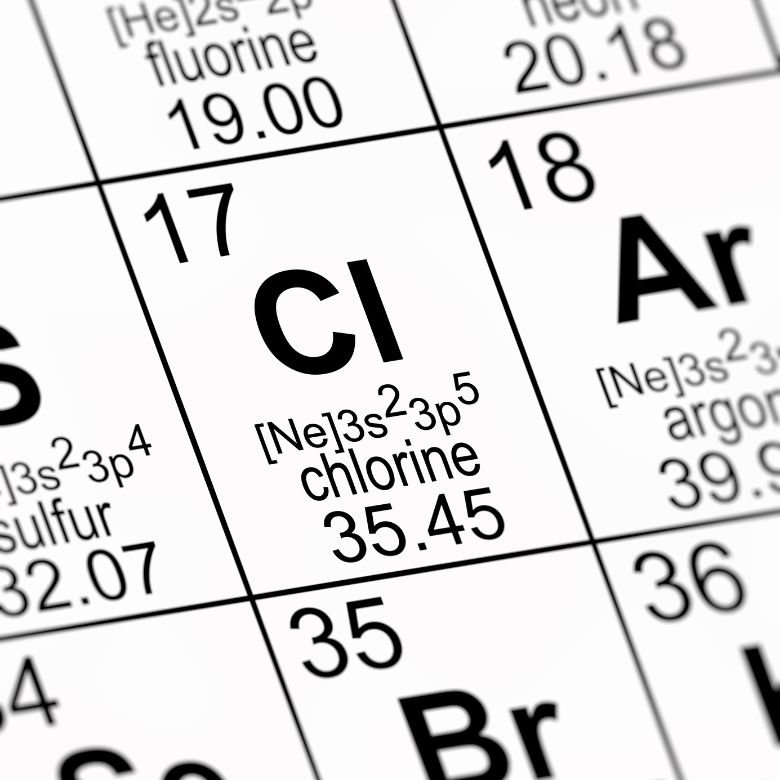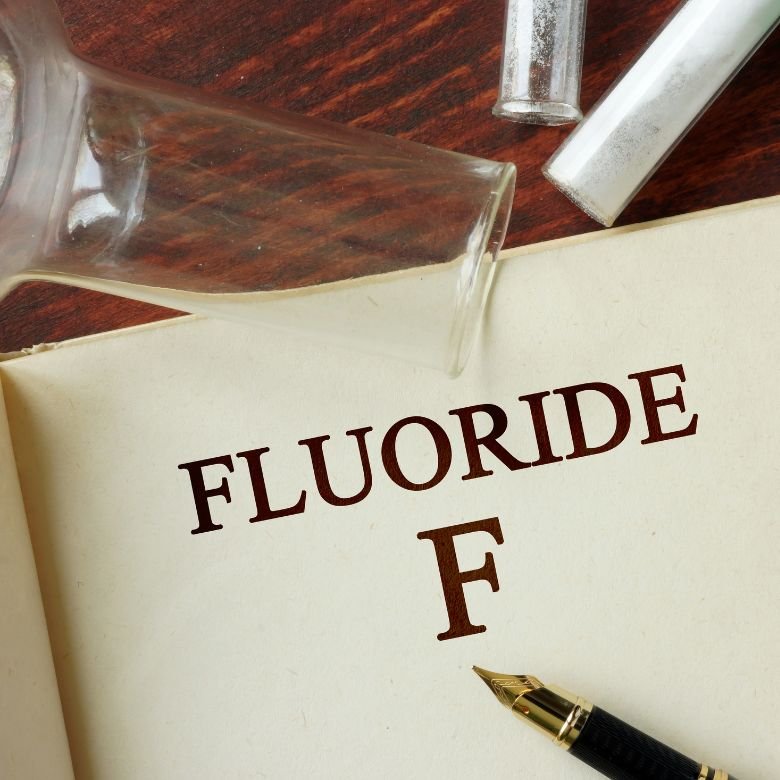The elements from group 17: fluorine (F), chlorine (Cl), bromine (Br), iodine (I), and astatine (At) are defined as halogens. What are the characteristics of halogens? Where do they occur and how can we use them? Read more in the article below!

The characteristics of halogens
The atoms of these elements contain 7 valence electrons, and their electron configuration in the basic state is s2p5. Halogens lack only one electron to reach the full octet, which is also the electron configuration of the closest noble gas. They show an extremely high tendency to attract the missing electrons and produce a mononegative X– anion or, if the difference in electronegativity of a halogen including the element that bonds therewith is not sufficiently high, then to produce a covalent bond. The electron attraction is related to the fact that halogens show high electron affinity because, just like oxygen atoms, the attachment of an electron to a free atom causes the emission of energy. On the contrary, detaching an electron from a highly electronegative halogen in order to produce an X+ cation requires an enormous input of energy.
Halogens show very high reactivity, being amongst the most chemically active substances. At room temperature, they take part in reactions with many chemical compounds and bond abruptly with many elements. That reactivity declines from fluorine to iodine, as the relatively low energy of chemical bonds in diatomic halogen molecules causes them to break off easily. Another important feature of halogens is that they are very strong oxidants. Their standard potentials are as follows:
- fluorine: 2.866,
- chlorine: 1.35827,
- bromine: 1.0873,
- iodine: 0.5355,
- astatine: 0.3.
With its high potential, fluorine is the strongest oxidant in the group and one of the strongest in the entire periodic table.
Physical properties of halogens
Compared to the elements with a close location on the periodic table, halogens show very high ionisation energies. The first ionisation energies expressed in [kJ·mol-1] for fluorine, chlorine, bromine and iodine, respectively, are 1681.0; 1251.1; 1139.9; 1008.4. These values are high, but they decline considerably along with the increasing atomic number. Similarly, as the atomic number grows, the number of atom shells and the atomic radius also increase. In consequence, the attraction of valence electrons by the nucleus gets weaker. When looking at different periods in the periodic table, we can observe that the following values are higher than in other groups:
- electron affinity levels: F: 328.2 [kJ·mol-1]; Cl: 348.6 [kJ·mol-1]; Br: 324.5 [kJ·mol-1]; I: 295.2 [kJ·mol-1], and
- ionisation energies.
Due to these characteristics, halogens show the highest electronegativity in their respective periods. Fluorine has the highest electronegativity value of all elements. These values are: 4.10 for fluorine, 2.83 for chlorine, 2.74 for bromine, 2.21 for iodine, and 1.90 for astatine. The atomic mass grows from fluorine to astatine, just as the melting and boiling points.
| Element | Atomic mass [u] | Melting point [K] | Boiling point [K] |
| Fluorine | 19 | 53.52 | 85.03 |
| Chlorine | 35.5 | 172.15 | 239.02 |
| Bromine | 80 | 265.90 | 331.93 |
| Iodine | 127 | 386.75 | 458.39 |
| Astatine | 210 | Approx. 575.00 | – |
Table 1. List of the physical characteristics of halogens.
In normal conditions, fluorine and chlorine are gases, bromine is a liquid with a high vapour pressure, and iodine is a solid. The latter shows a considerably high vapour pressure below the melting point, which allows it to sublime when adequately heated. This characteristic is often taken advantage of when purifying iodine. The discussed elements are coloured: fluorine has a slight yellow-and-green tint, chlorine is green-and-yellow, bromine vapours are clearly red-and-brown, while the vapours of iodine are violet. Bromine as a liquid is dark brown, and iodine in a solid state takes the form of crystals with a grey-and-black colour and metallic gloss. In the gaseous state, all halogens emit a strong, irritating odour. Vapours of fluorine, chlorine and bromine have a particularly strong effect on the human body. However, iodine is equally toxic but has a much lower vapour pressure in room conditions.

The oxidation states of halogens
The oxidation state –I is the most stable for the atoms of chlorine, bromine and iodine, whether in acidic or basic solutions. For fluorine, it is the only oxidation state which that element takes in chemical compounds. Others, by using the d orbitals, can also switch to positive oxidation states, mostly to I, III, V and VII, mainly in interhalogenic compounds, oxides, and oxyacids. The group in which halogens are classified (17) suggests the highest acceptable oxidation state (VII). Chlorine, bromine and iodine take such electron configurations. Whether at zero or at positive oxidation states, halogens show strong oxidating properties, especially in acidic solutions.
The natural occurrence of halogens
Natural halogens only occur in a bound state. The highest quantity of fluorine exists in the Earth’s crust, this being around 5.85·10-2% by weight. This is followed by chlorine: 1.45·10-2% by weight. That sequence is reversed in sea water, where the content of chlorine is around 1.901, and of fluorine, around 1.3·10-2% by weight. On the other hand, bromine and iodine presently show significantly lower concentrations in both zones. In the Earth’s crust, they represent 2.4·10-4 and 4.5·10-5 percent by weight, respectively. In sea water, these values turn to 6.73·10-4 and 6·10-6. Astatine can only be produced synthetically, but it has a few natural, short-term radioactive isotopes whose content in the Earth’s crust exceeds 3·10-24% by weight.
The highest amounts of fluorine in the Earth’s crust occur in the form of fluorite CaF2, apatite Ca5(PO4)3 and cryolite Na3AlF6. The key and the most common raw material occurring in nature, used to produce chlorine and its compounds, is sodium chloride.
It occurs in relatively high quantities in sea water, along with chlorides of other group 1 and 2 metals. Apart from that, due to the long-lasting sea drying process, there are many areas where sodium chloride forms extensive deposits. There are also a lot of minerals that contain chlorine. These include sylvine (KCl), carnallite (KMgCl3·6 H2O) and kainite (KMgCl(SO4) ·3 H2O), which occur especially in salt deposits formed as a result of drying of enclosed sea areas. Iodine in the form of organic compounds occurs in small quantities in sea water. It used to be produced out of seaweed ash, but today it is mostly acquired from sodium nitrates that contain iodates (V) and iodates (VII). Their largest deposits are located in Chile and Bolivia, and the iodine compounds present therein turn into waste crystalline lyes. Iodine also occurs in the human thyroid gland, and its shortage causes disease symptoms.
Production of halogens
The key role as an industrial raw material used to produce fluorine compounds and pure fluorine is played by fluorite. When subjected to concentrated sulphuric acid, it produces calcium sulphate and hydrogen fluoride. It, in turn, is then processed into fluorides and free fluorine. However, free-state fluorine can only be produced by electrolysis. Since fluorine acts abruptly on water, the electrolysis is not carried out in aqueous solutions but in a mixture of molten potassium bifluoride with anhydrous hydrogen fluoride at around 340–400 K.
Chlorine is produced on a technical scale by the electrolysis of sodium chloride in an aqueous solution or in the form of molten salt. In both ways, the product is formed on the anode. For laboratory practice, chlorine is usually produced by acting with concentrated hydrochloric acid on potassium tetraoxomanganate (VII) or manganese dioxide.
Bromine is acquired with the same methods as chlorine, by educing it from bromides. The most popular method is to displace bromine with chlorine, for instance while producing it from sea water.
Iodine is educed from iodides just like the bromine from bromides. Iodates acquired from saltpetre are reduced with the use of hydrogen sulphates (IV).
The most stable astatine isotope is 211At, which can be obtained by bombarding the 209Bi bismuth nuclei with alpha molecules. Such an astatine can be then educed by heating it up to around 600–900 K in a nitrogen flux or in vacuum. The condensing product can be noticed on the cold wall of the vessel.

Applications of halogens
Fluorine produced at an industrial scale is a material for acquiring UF6 and UF4. The former is used when separating uranium isotopes, while the latter is then processed into metallic uranium. Hydrocarbon fluoridation products, that are compounds in which hydrogen has been substituted by fluorine, are also increasingly used. Their physical properties are similar to those of hydrocarbons, except they are non-flammable and non-oxidizable. Fluorine is also used for producing a plastic matter called Teflon, that is polymerized tetrafluoroethylene, as well as freon, which is difluorodichloromethane applied in refrigeration technology.
The elementary chlorine has whitening properties, so it is used in the textile and cellulose production industries. It also serves as a potable water disinfectant and is an input material used for the production of many inorganic compounds including chlorates or chloroform.
Bromium is applied in the pharmaceutical industry, as potassium bromide is a tranquilliser. It is also used for synthesising synthetic dyes, as silver bromide in photography, or as a herbicide in the form of methyl bromide. In laboratories, bromine mostly serves as an oxidant, mainly in the bromine water solution.
Iodine in the form of iodine tincture, that is an alcoholic iodine solution, is used as a disinfectant in medicine. It also has a multitude of applications in analytical chemistry, for instance as a reagent in iodometry.